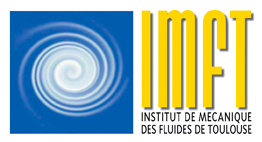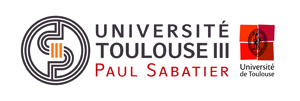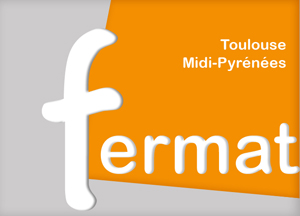Aeraulic transfer mechanisms through openings on enclosures in maintenance and dismantling sites: Evaluation of aerosol aerodynamic behavior contribution to backflow phenomenon
Abstract :
The context of my thesis concerns the safety of ventilated enclosures implemented on maintenance and dismantling sites of nuclear sites. It aims to characterize the efficiency of dynamic containment of ventilated airlocks by studying the backflow of gaseous and particulate pollutants. Backflow phenomenon can occur through nominal or accidental openings on ventilated enclosures under the effect of an internal or external aeraulic disturbance. Our works are the continuation of S. Kaissoun1 works who studied the phenomenon of local backflow of a gaseous pollutant at a rectangular opening on a reduced-scale enclosure. As part of my thesis, we added an external envelope around the experimental enclosure in order to characterize the overall quantity of pollutants coming from the backflow. The main objectives of my thesis are as follow. On one hand, we aim to characterize the backflow phenomenon experimentally using laser visualization techniques (Schlieren, PIV) and to measure the local and global quantities of gaseous and 5 μm particulate pollutants emitted through an opening using dedicated tracing techniques. On the other hand, we aim to validate the capacity of hybrid CFD turbulence models (SST-DES) to qualitatively and quantitatively transcribe the unsteady backflow phenomena of gaseous and particulate pollutants. The experimental and numerical results obtained allow us to draw the following two conclusions. First, the aeraulic behavior of gas and 5 μm aerosol is similar near the opening for our aeraulic conditions. Secondly, the capacity of SST-DES hybrid model to reproduce the backflow phenomenon is qualitatively and quantitatively validated. Experimental and numerical studies of the backflow phenomenon were finally carried out on a full-scale airlock with flexible vinyl walls. Preliminary works show that quantitative results obtained experimentally matches those obtained from numerical simulations
Abstract :
Arctic environments are the regions that see the most significant climate warming of the Northern Hemisphere. These wetlands are widespread in Arctic ecosystems due to the large accumulation of organic matter (peat) produced by the organisms found there, Sphagnum mosses and lichens. The presence of large amounts of permanently frozen soil horizons (permafrost) makes these environments vulnerable. Numerous signals (increasing average annual temperatures, precipitation anomalies, changes in plant diversity) can already be observed. Climate projections for the year 2100 predict increases in temperature and precipitation in northernmost Arctic regions. These increases lead to the activation of climate feedback loops, which in return amplify climate change. The aim of this thesis is to study the low vegetation cover of Arctic wetlands (Sphagnum, lichens, peat) by considering them as a porous medium. A set of experimental and numerical techniques for studying porous media will be applied to samples from several sites: Khanymey (Siberia) as first place, but also Abisko (Sweden). Some samples from Clarens (France) are collected to serve as test samples. The samples are digitally
reconstructed using X-ray tomography. The digital reconstruction is then used to study the morphological (§I), hydraulic (§II) and thermal (§III) properties of this biological porous medium.
(§I) The morphological study shows a high porosity (sometimes more than 90%) for Sphagnum, lichen, and peat samples. High specific surface areas indicate a significant exchange and absorption potential for the study of element transfer. Representative Elementary Volumes (REV) may be defined for a majority of the samples.
(§II) The simulation of a single-phase flow is used to compute the effective permeability of the studied samples. Samples with a REV are studied by direct numerical simulation at the REV scale. For samples without REV, a pore network is generated from the sample reconstruction. In both cases, the obtained values of the effective permeability tensor show a high hydraulic conductivity. The results are similar to other experimental tests reported in the literature and make it possible to overcome the problem of sample compressibility.
(§III) The thermal properties are characterized using a coupled experimental and numerical approach. The experimental approach consists in studying the steady-state conductive heat transfer. The characterization of the effective thermal conductivity highlights the insulating property of the Arctic vegetation cover, with consistent values between each type of sample. The value of the intrinsic thermal conductivity of the plant material is calculated by inverse modeling of the experiments.
Taken together, these transfer property studies provide a solid basis for generating an effective boundary condition for Arctic vegetation cover. However, further work is needed, in particular to quantify the influence of solar radiation flux on the energy balance of the Arctic vegetation cover. To this end, a preliminary work is presented that confirms the
need for further information on the radiative transfer properties of this porous biological interface.
Thèse dirigée par Manuel MARCOUX et Laurent ORGOGOZO
Jury
- M. Hotaek PARK, Rapporteur
- M. Laurent OXARANGO, Rapporteur
- Mme Sophie OPFERGELT, Examinatrice
- M. Michel QUINTARD, Examinateur
- M. Manuel MARCOUX, Directeur de thèse
- M. Laurent ORGOGOZO, Co-directeur de thèse
- M. Oleg POKROVSKY, invité
- Mme Laure GANDOIS, invitée





